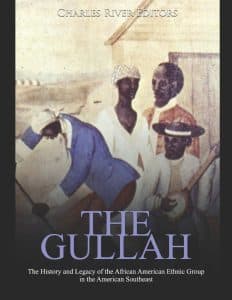NOTE: THIS WEBSITE IS A WORK IN PROGRESS. RESOURCES AND DATA ARE ADDED DAILY.
IMPORTANT: We are in urgent need of funding to keep this project alive and ensure its future. If you’re enjoying the site and see our vision for the project, please consider joining as a paid member or contributing to our crowdfunding campaign today. It is only with your help that we can continue this work.
Thanks so much for your support! – Jes
![]()
The Gullah: The History and Legacy of the African American Ethnic Group in the American Southeast
share:
Some buttons on this page link to external websites. If you visit one of our affiliate sites and make a purchase, I may receive a small commission at no extra cost to you. More info
- UPDATED: 6.29.2025
- Peoples, Black History, History
author:
Charles River Editors
editor:
n/a
publisher:
date:
10.22.2019
ISBN:
9781701803251
pages:
44
notes:
contents:
description:
Of course, the first Gullah people were not natives of the Deep South, nor were they eager immigrants who willingly crossed the North Atlantic in the hopes of landing opportunities available only in the “land of the free.” Rather, the Gullah were normal, everyday people who were forcibly extracted from their homes and shipped like chattel to a foreign land, where they were sold, purchased, and put to work on plantations, mines, factories, and elsewhere. Simply put, they were an ill-starred, yet fiercely diligent people who made the most out of their unimaginably horrific fates, constructing their own colorful customs and a remarkable legacy for their future successors.
A number of notable figures have been linked with the Gullah in recent years. Michelle Obama, for instance, is said to be a descendant of a Gullah slave who once dwelled in a cotton plantation in the Low Country region of South Carolina. Little Melvinia was no older than eight when she arrived at the plantation of one Henry Wells Shields, soon after adopting the surname of her “master,” as per the customs of the mid-19th century. A teenaged Melvinia was ripped from her home once more in 1852 and relocated to Georgia, and it was there that she was impregnated by a white man and gave birth to the great-great-grandfather of the former First Lady. South Carolinian boxing icon Smokin' Joe Frazier and Cleveland Browns legend Jim Brown of St. Simons Island, Georgia also share Gullah blood.
The Gullah: The History and Legacy of the African American Ethnic Group in the American Southeast examines the origins of the people, their culture, and how their history has winded over the centuries. Along with pictures depicting important people, places, and events, you will learn about the Gullah like never before.
places:
peoples:
CMOS:
author-date:

